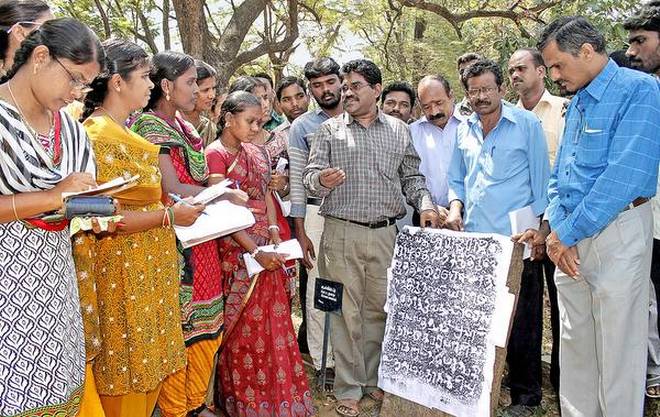
They were taught to interpret the messages on the inscriptions
The about 45 M. Phil and Ph.D research scholars belonging to the Departments of History and Tamil of the Government Arts College in the city underwent a specialised training in epigraphy for three days at the Government Museum in the city.
C. Govindaraj, known epigraphist-cum-archaeologist, and curator of the Government Museum, Krishnagiri, was the resource person.
Mr. Govindaraj explained the earliest Brahmi script, the development and transformation of script through ages, leading to the emergence of ‘Vatta Ezhutthu’, and the later Tamil scripts with special reference to the tenth century Raja Raja Chola era.
The Brahmi script was not used by the Tamil society alone, but across the whole country.
On the first two days, the research scholars got training in identification of script and interpretation of the messages on the inscriptions. On the final day on Thursday, they were imparted practical training in estampage.
Mr. Govindaraj said that the students in the two days learnt to write Vatta Ezhuttu to a certain extent.
A similar programme held at Krishnagiri Government Museum too evoked good response, he added.
K. Subash Chandra Bose, an M.Phil scholar, said that this training programme was a good opportunity to learn about the inscriptions and Brahmi script, which will immensely benefit them in their research work.
J. Mullai Arasu, curator of the Government Museum here, said that following the success of this programme, it had been proposed to have another similar programme for the research scholars of the Government Arts College for Women shortly.
At the valediction held in the evening, A. Thennarasu, Associate Professor, Government Arts College, delivered special address.
Mr. Mullai Arasu handed over the certificates to all the participants.
source: http://www.thehindu.com / The Hindu / Home> News> Cities> Coimbatore / by Special Correspondent / Salem – February 17th, 2017